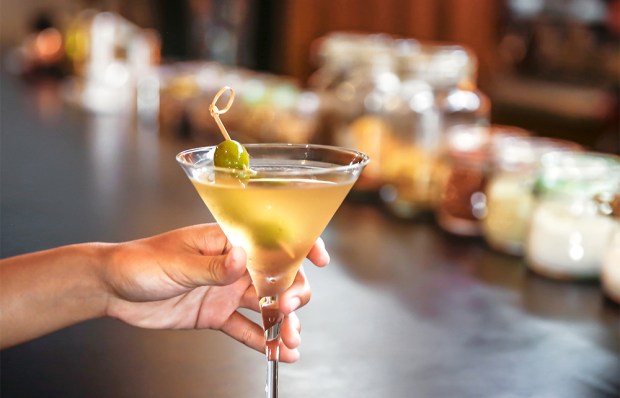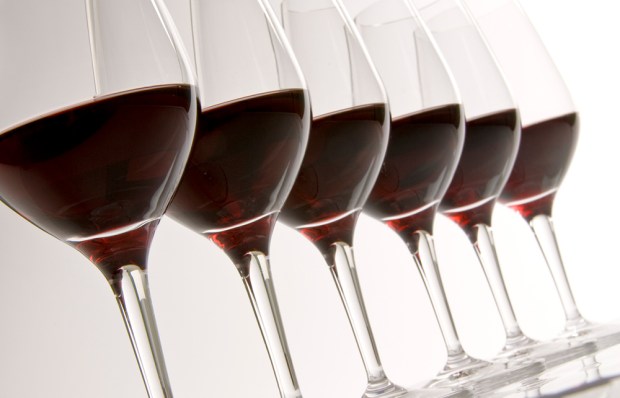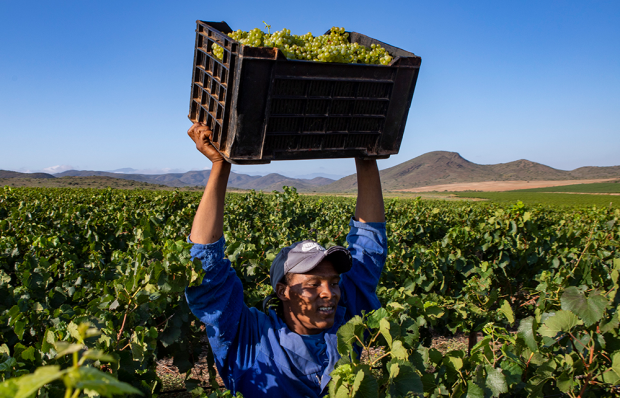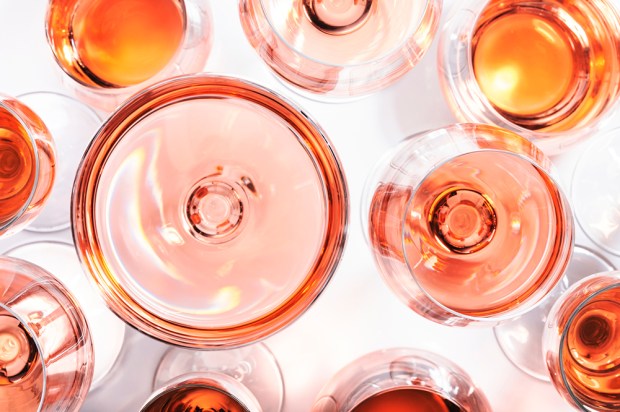We were pondering the relationship between military history and wine vintages. It is extraordinary to think that the French managed to make wine throughout both world wars. In the late 1980s, Alan Clark had David Owen and me to lunch at Saltwood, his castle near Hythe. It is a proper castle; the stones are still marked by the rust of medieval warfare. According to legend, the knights who slew Thomas à Becket made their final preparations there. How appropriate for a future Clark residence. There was some dispute as to whether Alan went over to Rome on his deathbed, but during the years of swaggering health his sympathies would have been with the swordsmen, not the croziers. He would have had little use for turbulent priests.
Anyway, he produced a swagger wine. In the diaries, he claims that it was a 1916 Latour. Agreeing about the year, I am certain that it was a La Mission Haut-Brion. ‘This should be fine,’ declared our host. ‘I opened it two hours ago.’ I said nothing but feared greatly. With a wine threequarters of a century old, it is wiser to uncork and pour. There is an analogy with opening an ancient tomb. Occasionally, miraculously, the corpse has been preserved. Then the fresh air arrives and it crumbles into dust.
Alan’s wine did not crumble. Over the hill, yes, but it had been a very high hill. There was still plenty of fruit as well as tannin. We wondered how it would have been harvested and bottled. Although Bordeaux was not within shelling range of the Western Front, it would have fallen under the shadow, like the whole of France. Young able-bodied men would have been long gone: some no doubt already fallen; more about to be claimed in the defence of Verdun. For replacements: females, boys, vieillards — also, no doubt, some mutilés de guerre. All of them embodying the spirit of ‘ils ne passeront pas’. By the time we drank their bottle, almost all would have passed on, but we complimented their shades for producing a wine of such enduring substance.
A hundred years after Verdun, the Burgundy weather tried to equal the worst climatic horrors of Flanders warfare. An inundation of rain was followed by a frost in late April. Some vineyards almost gave up. It is a tribute to modern vinicultural techniques, not to mention grit and determination worthy of Pétain’s poilus, that any grapes survived. With the help of late sunshine, they did, though yields were drastically reduced.
This is one reason why the vintage is underrated. Another is its proximity to the 2015; big wines, full of fruit but disciplined by tannin. Bottles like that can suck the oxygen out of the market. The ’15s have distracted attention from both the ’16s and the ’14s.
I wonder. There is no doubt that 2015 was a great year. The experts are unanimous. Yet the surrounding years should not be underrated. Moreover, the ’14s are already drinkable, even premiers crus. It would be a shame to overindulge in bottles that have a fascinating maturation ahead of them: the best ones will last until the 2030s. But reports from the tasting frontline suggest that the 2015s have retreated into themselves. This is not unknown among serious wines. In earlier years, it was true of some of the ’82 clarets. There is every reason to expect a second coming. Even so, I still harbour doubts. I wonder if some of the wines will eventully turn out to have too much fruit, making harmony impossible to achieve.
As for the ’16s, anything from Domaine des Lambrays or Albert Bichot will be outstanding, and priced accordingly. At a recent tasting, Bichot’s Chambertin was beyond praise. In all this, we are dealing with biology, climate and humanity. What an endlessly fascinating study, especially when wine is the end product.
Got something to add? Join the discussion and comment below.
Get 10 issues for just $10
Subscribe to The Spectator Australia today for the next 10 magazine issues, plus full online access, for just $10.
You might disagree with half of it, but you’ll enjoy reading all of it. Try your first month for free, then just $2 a week for the remainder of your first year.














Comments
Don't miss out
Join the conversation with other Spectator Australia readers. Subscribe to leave a comment.
SUBSCRIBEAlready a subscriber? Log in